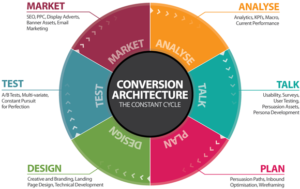Recover from Low Landing Page Conversions with These 4 Steps
A landing page is similar to a fishing net: if you don’t have a good one, you simply aren’t going to catch any fish. Your landing page makes one of the most vital impacts on your conversion rates. After the time, effort and money invested into building your landing pages, the last thing you want is a high bounce rate and no interest in your business, products and services. Recover from Low Landing Page Conversions with These 4 Steps

The goal of a landing page is to provide a seamless and simple way to grab a specific audience’s attention and steer them towards taking action within your site:
- To make a product purchase
- To request more information or talk to a consultant
- To subscribe to gain exclusive information and updates
- To seek out educational or promotional products
It all sounds relatively simple, and the creation of landing pages is relatively straightforward. It’s when the audience gets added into the mix that things tend to go awry. You may have designed a brilliant landing page that you are proud of, but until it has been put to action by the average user, you can’t possibly know how it will convert.
It is when an audience is introduced that a designer starts to recognise areas that need tweaking and changing.
Of course, you shouldn’t start mending a fishing net without looking up a ‘how-to’ guide, because there’s a good chance you’ll just end up wasting time and not fixing the problem. The same goes for landing pages, so here are four steps to improve the conversion rates coming from your landing pages.
1. Grow Trust
Through your lead nurturing techniques, you may have reviewed a lot of leads that are being funnelled through to your landing pages. These people may have absolutely no idea who you are, and therefore need trust signals put in place to make sure that, above all things, you are legit.
Ensure you put trust signals in place to reinforce your legitimacy and reliability, boost confidence in your users and build a stronger relationship.
There are various ways to do this, such as:
- Social proof: Do you have social media pages? Put these on display for your leads. Not only do they show that you are an established business, they also reinforce that you have people who believe in and follow your company.
- Professional affiliations: If you have partnered with another brand, influencer or organisation, it may be worth displaying this on your landing page. Though simple, this can have a massive impact on the way your business is viewed by the lead.
- Third-party certifications: It may seem rather trivial, but when asking people for personal information or even money, having authentic third-party certifications can help you in your lead conversion. This kind of affirmation builds authority and shows that you are, again, legitimate.
2. Calling it to Action
As we touched on earlier, a landing page is designed to influence a lead to take action, which is something that should be clearly outlined. By including a vibrant and obvious call-to-action, you can help your lead along in making that decision. A call-to-action should be above the fold; that is, your audience shouldn’t have to scroll once they have landed to find your CTA. Make sure it stands out with a bold colour and you’re good to go.
3. Keep it Engaging
First impressions are important when it comes to a website. Having a visually appealing and attention-grabbing site can greatly help your ability to grab leads and convert them.
To complement this, you should have compelling content that allows the lead to connect with your business. This should be well-written and error-free, and something that portrays the personality of your business. It should be presented in a way that is easily scanned by the user so that they can gather a condensed form of information when in a rush to buy a product/service like yours.
High-quality content, both written and visual, goes a long way.
4. Test it Always
Every single change you make to your landing page will influence your conversions in some way, both negative and positive. This is why it is vital that testing is carried out for any changes made.
A/B testing allows you to assess two elements against one other so that you can test which converts best. You can test full combination changes with multivariate testing, although this is more complicated to carry out.
Rounding out…
Getting lower conversion rates doesn’t mean that you have to scrap your landing page and start all over again. It may just mean that you should alter your approach to see the results you want. Get a landing page that converts with the help of NBW.



